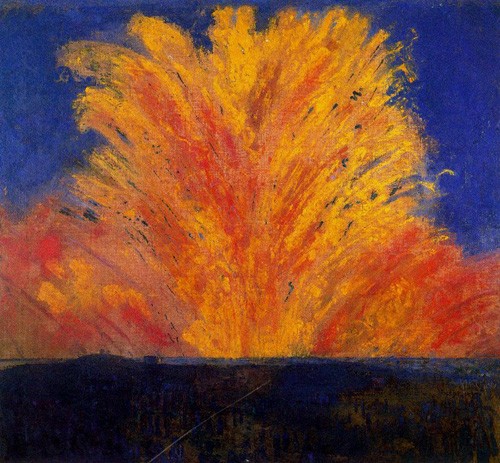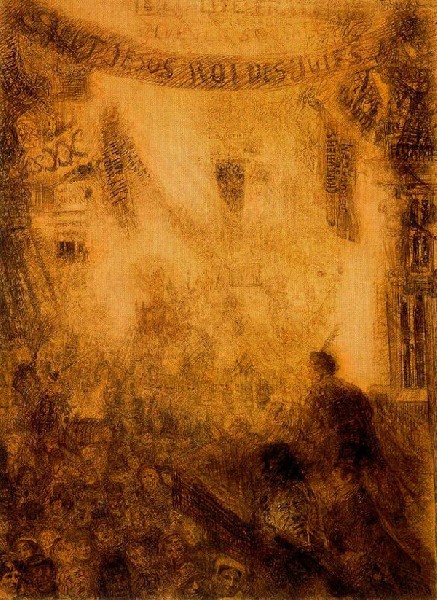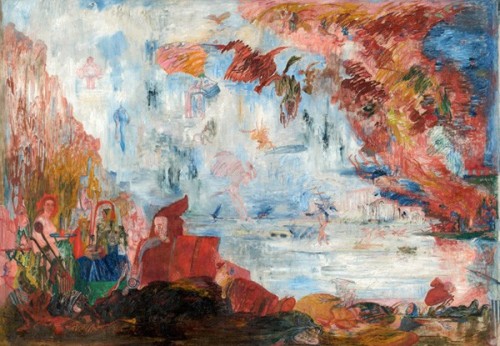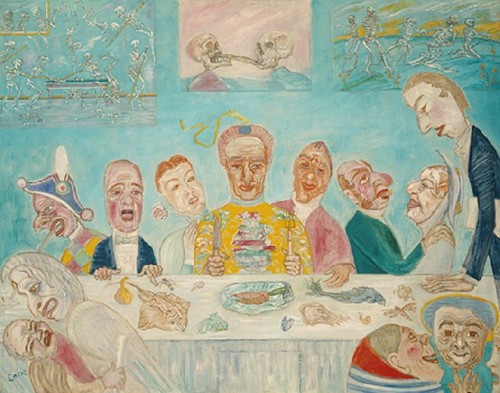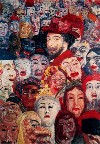James Ensor at the Museum of Modern Art
Belgian Painter Evokes Fantasy Expressionism
By: Adam Zucker - Jul 06, 2009
James EnsorJune 28 - September 21, 2009
The Museum of Modern Art
11 West 53rd Street, New York 10019
212-718-9400
Considering the long history of Belgium as a cultural center it's amazing how unique James Ensor is from the many other artists who lived there. A seventy-year long career and a retrospective survey at the Museum of Modern Art this summer evokes a man who started out dismally realistic and dark and became colorfully bizarre and burlesque.
The first gallery space exhibits his earlier work from the time he was showing at the Salon after studying at the Royal Academy in Brussels. These paintings and drawings are realistic scenes in a very gloomy and subdued manner. Then suddenly, color explodes onto canvas like a Fourth of July fire works spectacular. Adam and Eve Expelled from Paradise (1887) and Fireworks (1887) are wonderful examples of his visionary rendition of light and expressive handling of paint. As one moves through the show it becomes increasingly evident that Ensor was an important precursor to both Expressionism and Surrealism.
Throughout MoMA's exhibition, themes overlap as Ensor explores a wide range of subjects. First there are the city scenes and the landscapes. Then religious paintings he had created from the mid to late 1880's. The most famous of these Christ's Entry into Brussels (1989) hangs in the J. Paul Getty Museum and wasn't included in the show. For whatever reason it didn't make the trip cross-country. However, there is a very large drawing of Christ's entry into Jerusalem created four years prior to the Brussels piece.
The subjects that prove to be most stunning, however, are Ensor's fantastical paintings of masks. His career reached a bizarre point when he started to paint macabre scenes, a modern reminiscence of Bosch and Goya. The Tribulations of St. Anthony (1887) is simply a masterpiece, which stopped me in my tracks. The work looks like a surreal nightmare where a series of macabre and distorted figures transcend off the canvas into space.
His paintings bring together fascinations of carnival life while evoking satirical undertones, with some more subtle than others. Ensor walked the line between fine art and illustration, creating some of the most fascinating social commentary of his time including The Wise Judges (1891) and The Bad Doctors (1892).
Ensor is usually not mentioned prominently in mainstream surveys of early Modern Art. While he had achieved commercial success in his lifetime, Ensor's fusion of low and high art made him an outsider within the art world. It is obvious that he still hasn't received his due credit.
This ambitious exhibition by curator Anna Swinbourne however, attempts to right art history's wrongs. Ensor's art is as much a revelation in painting as was Van Gogh's. His personal symbolism was greater than Moreau and equals that of Munch. Today one needs only to look around the contemporary figurative painting scene to find disciples of Ensor's style. Wherever art is hallucinatory, macabre or adversarial and satirical, you can be assured that the legacy of James Ensor is an influence on the work..

